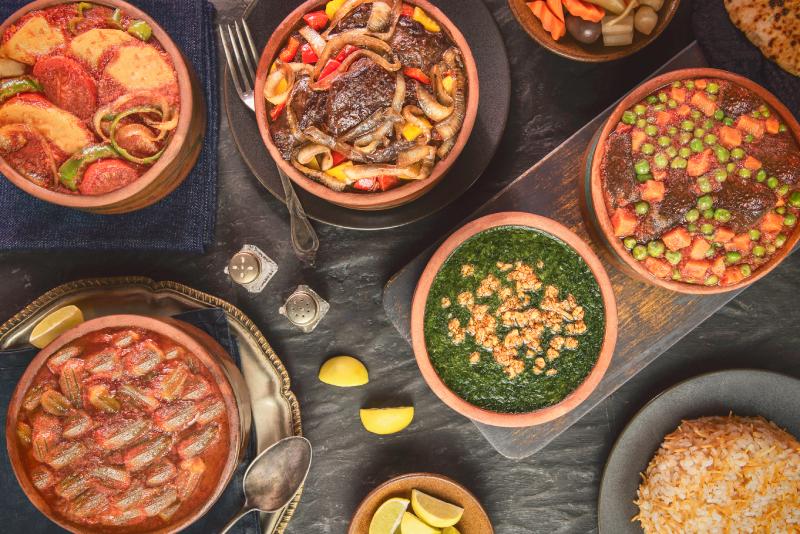
Egyptian food is a delightful tapestry woven from the threads of history, culture, and geography. As we embark on this culinary journey, we’ll explore the diverse flavors that define traditional Egyptian dishes and uncover the rich stories behind them.
Egyptian cuisine is a rich blend of spices, herbs, and traditions passed down through generations. Each dish we tried, whether a hearty stew or a sweet pastry, told a story of ancient pharaohs and lively bazaars. Our journey through Egypt’s flavors has been one of pure delight. We invite you to join us in exploring the ingredients, culture, and creativity that make Egyptian food truly unforgettable. There's something here for every curious palate.
Egyptian cuisine is a tapestry of flavors that has been shaped by thousands of years of history. The country's strategic location along the Nile River made it a melting pot of cultures, each bringing their own culinary traditions. Ancient Egyptians laid the groundwork with staple ingredients like bread, and legumes, while the Greeks and Romans introduced new crops and cooking methods.
Egyptian cuisine amazed us with its depth, shaped by centuries of Persian, Ottoman, and Arab influence. Each dish we tasted told a story through spices and traditions. We loved how old recipes blend with modern twists, creating flavors that feel both timeless and fresh. Exploring these dishes showed us how history lives on in every bite,rich, resilient, and endlessly inspiring. It's a journey we’ll never forget, and one we hope you'll try too.
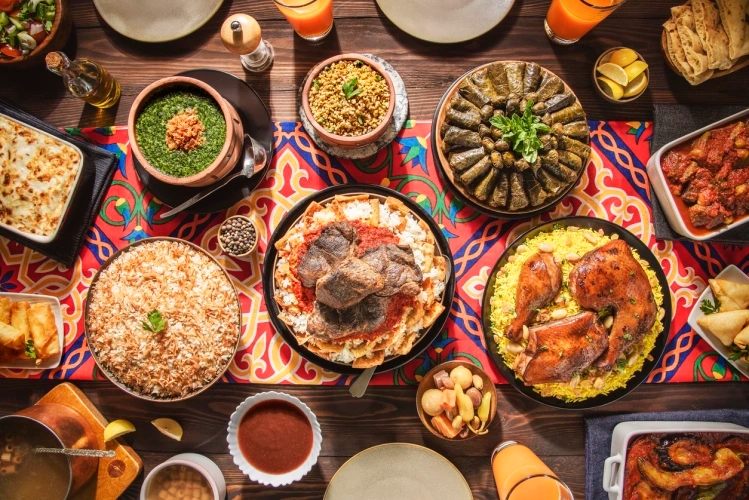
Imagine standing on the banks of the mighty Nile, watching its life-giving waters flow through the heart of Egypt, just as they have for thousands of years. This magnificent river isn't merely a geographic feature,it's the pulsing heart that has nourished one of North Africa's most fascinating food cultures. Egyptian cuisine dances gracefully between what the land permits and what centuries of cultural exchange have inspired.
The Nile amazed us with how deeply it shaped Egyptian food. This mighty river turns desert into fertile farmland, flooding each year and leaving rich soil behind. We saw how crops like wheat, veggies, and lentils have fed families for millennia. The ancient calendar followed the Nile’s rhythm, flood, growth, harvest, and so did their meals. As we explored Egyptian cuisine, we felt that same timeless connection, like each dish was part of a dance with the river that still flows today.
Walking into an Egyptian kitchen felt like stepping into history. We saw golden wheat and barley turned into warm bread and rich. Lentils, chickpeas, and fava beans added heart to every dish. The aroma of garlic, onions, and fresh greens filled the air, but it was cumin that truly captured us, its warm scent wrapping around a street cart like a hug. That moment still lingers with us, a reminder of how Egypt turns humble ingredients into unforgettable flavors.
Egyptian cuisine surprised us with its quiet wisdom, plant-based, sustainable, and deeply rooted in tradition. With farmland limited to the Nile Valley, Egyptians have long relied on crops over livestock. We visited during a Coptic fasting period and was amazed that the diet becomes essentially vegan, yet bursting with flavor. Dishes like koshari and molokhia blew us away with how they turned simple ingredients into pure comfort. Each bite felt nourishing, not just for the body, but the soul.

We still race thinking about our food adventures in Egypt, Sitting at a street-side table, sharing timeless dishes with locals, we tasted history in every bite. From simple carts to grand feasts, each flavor told a story of a land rich in tradition and unforgettable charm. Through Egypt Tours, we discovered not just places, but the soul of a nation served on a plate.
Koshari, This glorious mountain of carbs has stolen our heart completely. Picture this: a beautiful chaos of lentils, rice, macaroni, and spaghetti, crowned with crispy golden onions that crackle with each bite, all bathed in a tangy tomato sauce that tingles the taste buds. When that optional splash of garlic vinegar hits the warm mixture, we watched in awe as koshari vendors at Koshary el Tahrir in downtown Cairo assembled this 19th-century creation with lightning speed, serving crowds of hungry Egyptians seeking comfort in their beloved national dish.
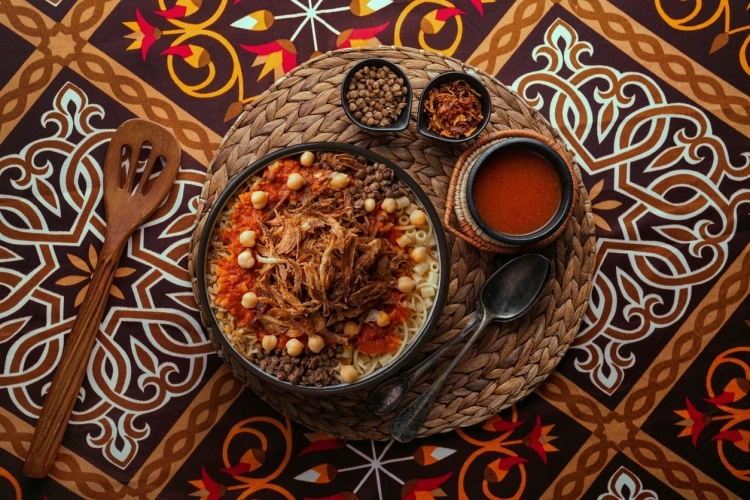
Molokhia is truly the marmite of Egyptian cuisine, Made from finely chopped jute mallow leaves, this viscous soup has a distinctive slippery texture that initially surprised our Western palate. But the flavor, simmered in chicken broth and punched up with garlic and coriander, carries a depth that keeps you coming back for more.We chuckled learning that an 11th century Fatimid Sultan once banned this humble soup simply because he found it unappealing, yet centuries later, it remains a cornerstone of Egyptian home cooking.
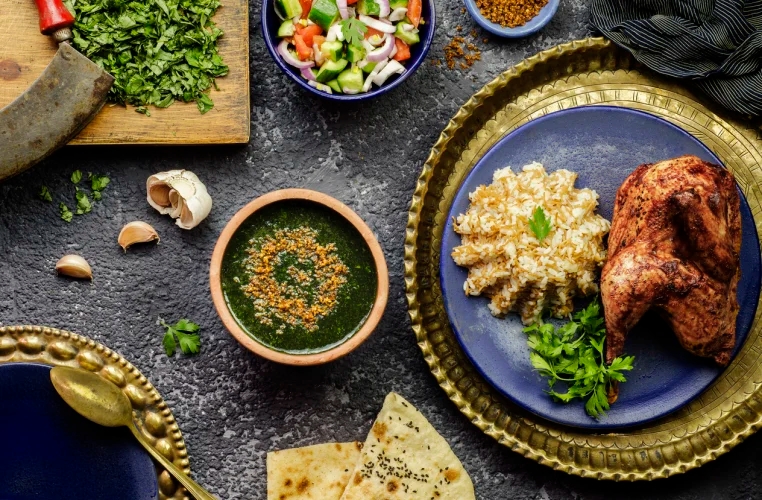
The sizzle of hawawshi hitting a hot griddle is music to our ears, This mouthwatering creation, minced beef spiced with cumin, peppers, and parsley tucked inside pita bread and baked to crispy perfection, have us dreaming of Cairo's bustling streets. Created by butcher Ahmed Al-Hawash in the 1970s, this savory pocket has become street food royalty. The genius lies in how the fat from the meat seeps into the bread as it cooks, creating a crackling exterior while keeping the filling wonderfully juicy. Each bite delivers a perfect harmony of spice, meat, and bread.
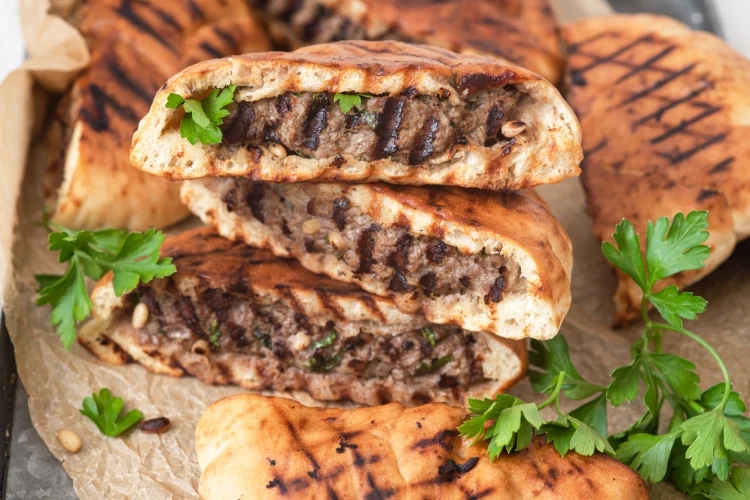
Standing mesmerized before the slowly rotating tower of meat, watching as skilled hands shave paper-thin slices that fall like autumn leaves, this is shawarma, Egyptian style. The meat, be it beef, lamb, or chicken, spends hours absorbing a symphony of spices: whispers of cinnamon, nutmeg, and oregano. Wrapped in soft pita with creamy tahini drizzled throughout, it creates a handheld feast that's utterly irresistible. Unlike its regional cousins, Egyptian shawarma embraces subtlety, allowing each spice to sing without overwhelming the tender meat.
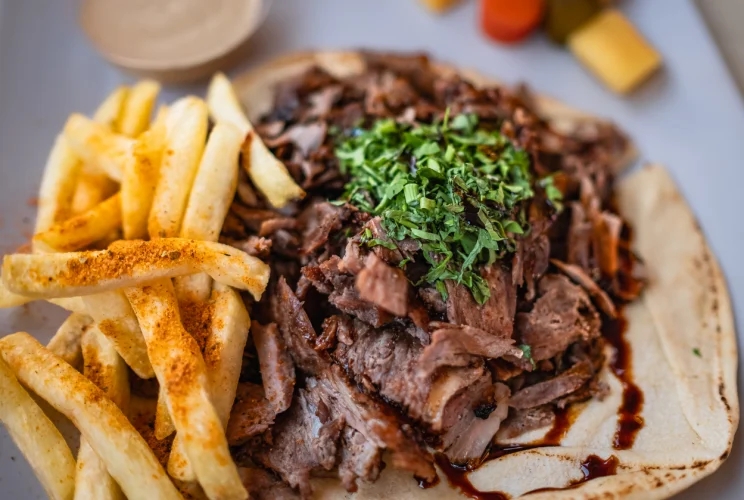
This tiny bird, stuffed with aromatic rice or nutty freekeh, represents Egyptian hospitality at its finest. Dating back to ancient times, hamam mahshi remains the centerpiece of celebratory meals, demonstrating both culinary skill and generous spirit. The tender meat, infused with warming spices, falls off the delicate bones, while the stuffing, having soaked up all those wonderful juices, provides the perfect accompaniment.
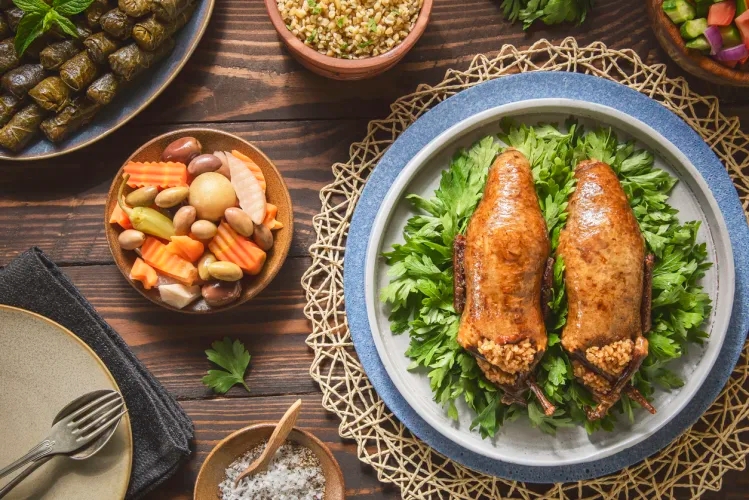
Watching an Egyptian baker create feteer meshaltet is like witnessing a dance. With hypnotic movements, they stretch dough into sheets so thin you can see through them, layer after gossamer layer, each brushed lovingly with ghee. This ancient pastry, once offered to Egyptian gods in pharaonic times, emerges from the oven golden and flaky, shattering delightfully with each bite. Sweet versions drizzled with honey and dusted with powdered sugar satisfy afternoon cravings, while savory variations stuffed with cheese and spiced meats make hearty meals that fuel Egyptian families through busy days.

Is a beloved comfort food and a staple of Egyptian home cooking. This hearty baked pasta dish features layers of penne pasta, a flavorful ground beef filling seasoned with onions and spices, and a rich, creamy béchamel sauce on top. Once assembled, it's baked to golden perfection, creating a crispy top layer with a soft, savory center. It's often served at family gatherings, holidays, and special occasions, offering a delicious taste of Egypt’s fusion of Mediterranean and Middle Eastern flavors.
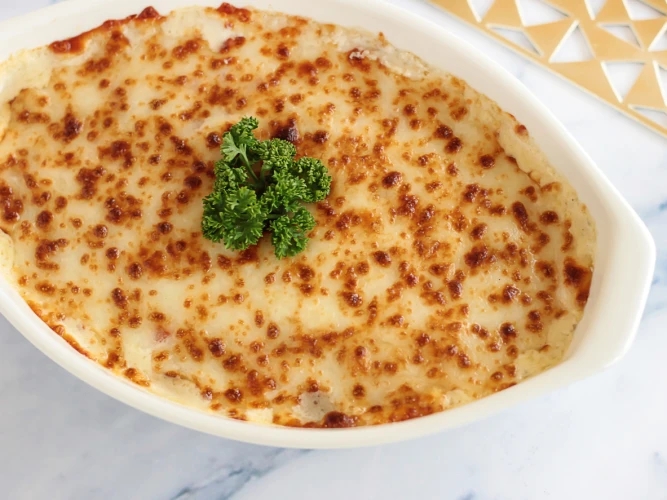
Egyptian cuisine is not only known for its savory dishes but also for its delectable desserts and sweets. These treats, often enjoyed during special occasions and festivals, are a celebration of flavor and tradition. With a rich history and a variety of textures and tastes, Egyptian desserts are sure to satisfy any sweet tooth.
1. Basbousa: A semolina cake1. Basbousa: soaked in sweet syrup, often flavored with rose or orange blossom water. Its moist texture and fragrant aroma make it a favorite among locals and visitors alike.
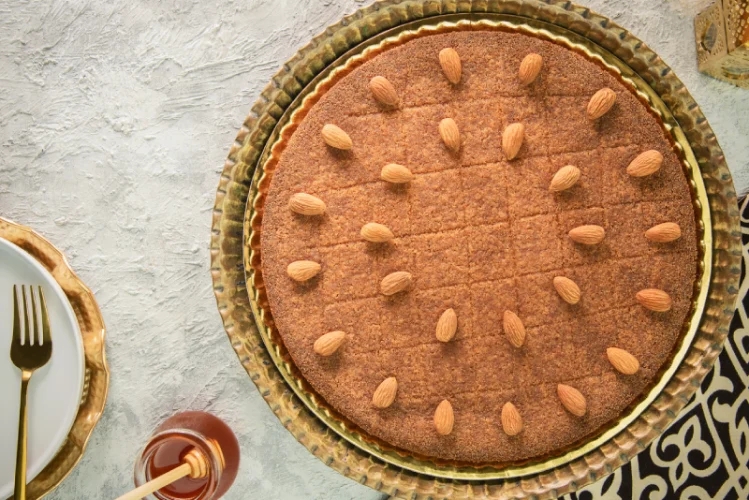
2. Kunafa: A decadent dessert made with thin, vermicelli-like pastry soaked in syrup and layered with cheese or nuts. It's a rich and indulgent treat that's perfect for special occasions.
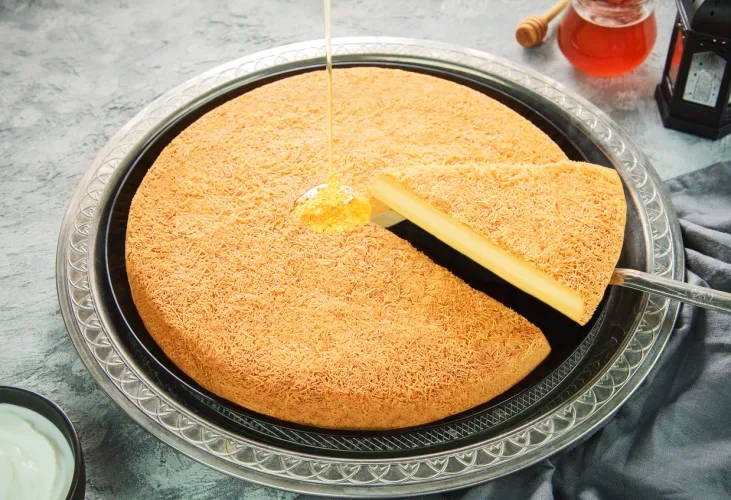
3. Umm Ali: A traditional Egyptian bread pudding made with layers of pastry, milk, and nuts. It's a comforting and satisfying dessert that's loved by many.
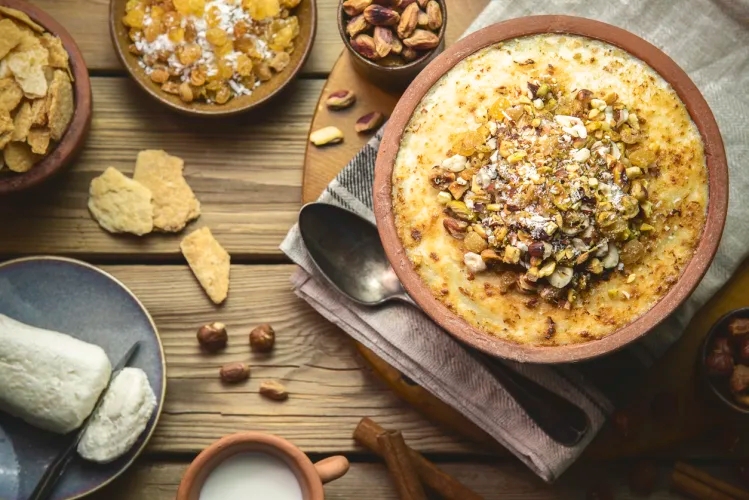
4. Roz bil laban: On hot Egyptian nights, nothing comforts like roz bil laban. This creamy rice pudding, gently sweet with hints of vanilla or spice, evokes generations of warmth and love.
5. Baklava: Baklava is a rich Egyptian dessert of flaky phyllo layers, nuts, and sweet syrup. Crispy and festive, it’s a holiday favorite that reflects Egypt’s sweet culinary traditions.

Cairo's maze-like streets hide culinary treasures that have captivated hungry souls for generations. My taste buds still tingle when we recall wandering through this vibrant city, following tantalizing aromas to discover eateries where Egyptian flavors shine in their most authentic glory. From elegant dining rooms to humble street carts operated by the same families for decades, these spots offer more than just meals, they serve up edible history with every bite.
Step through the unmarked iron doors of Abou El Sid in Zamalek, and you're whisked into 1940s Egypt. The first time we entered, it felt like a secret society, Dim rooms, vintage décor, and low round tables set the mood. Their molokhia arrived steaming, rich and earthy, just like grandma would make. Waiters in galabiyyas floated by with dishes steeped in history. Locals and travelers alike gather here, drawn by the promise of real Egyptian flavors and old-world charm.
Abou Tarek,What started as a humble cart in the 1950s is now a bustling koshari kingdom in downtown Cairo. We’ll never forget my first visit, watching the team layer rice, lentils, pasta, and chickpeas with flawless speed, then topping it with crispy onions and spicy tomato sauce. My bowl arrived in under five minutes. The Guinness World Record photo on the wall says it all, this place isn’t just a restaurant, it’s a national treasure of pure, delicious pride.
Zööba sparkles with youthful energy! When we walked into their Zamalek spot, the rainbow decor and artful jars of pickles drew me right in. Sharing a table with strangers over dishes like emerald-green fava falafel and smoky freekeh koshari felt like joining a modern Egyptian feast. We loved how every bite honored tradition while embracing bold creativity. With zero-waste vibes and serious flavor, Zööba quickly became one of my favorite Cairo food memories.
Nestled along the stunning Mediterranean coast, this seafood restaurant is a true gem for lovers of fresh, flavorful dishes. Specializing in locally caught fish and a variety of seafood, every plate showcases the ocean’s bounty at its best. From grilled fish to savory seafood stews, the menu captures the essence of coastal Egypt. The relaxed seaside ambiance complements the delicious meals, making it a must-visit spot for anyone eager to savor authentic flavors of the sea.

As our journey through Egyptian cuisine comes to a close, we leave with a deeper appreciation for the rich culinary heritage of this remarkable country. From traditional dishes and street foods to sweet treats and regional specialties, Egyptian food offers something for every palate. It's a cuisine that celebrates history, culture, and the joy of sharing a meal with loved ones.
We hope this guide has inspired you to explore the rich flavors of Egypt, whether by dining at local eateries or recreating traditional dishes at home. With its bold spices, fresh ingredients, and vibrant heritage, Egyptian cuisine is a true feast for the senses. For a deeper taste of culture and tradition, consider joining one of many Egypt Tours that let you experience these culinary delights right where they began.
Q1. What are some must-try traditional Egyptian dishes?
Some essential Egyptian dishes to try include koshari (a mix of rice, lentils, and pasta), molokhia (a green soup made from jute mallow leaves), hawawshi (spicy stuffed bread), and Om Ali (a sweet bread pudding dessert).
Q2. Is Egyptian cuisine vegetarian-friendly?
Yes, Egyptian cuisine is largely vegetarian-friendly. Many traditional dishes are plant-based, using ingredients like lentils, chickpeas, and vegetables. This is due to historical factors and the influence of the Nile River on agriculture.
Q3. Where can I find authentic Egyptian food in Cairo?
For authentic Egyptian cuisine in Cairo, try places like Abou El Sid for upscale traditional dining, Abou Tarek for the best koshari, Zööba for modern street food, or Felfela for a historic local experience.
Q4. What are typical Egyptian desserts?
Popular sweets include Basbousa (semolina cake), Kunafa (shredded pastry soaked in syrup), and Baklava. Mangoes and dates are also enjoyed as seasonal treats.
Q5. What spices are commonly used in Egyptian cooking?
Egyptian cuisine relies heavily on spices for flavor. Cumin is the most widely used spice, followed by black pepper, chili powder, and dried coriander. These spices create complex, warming flavors rather than intense heat in dishes.
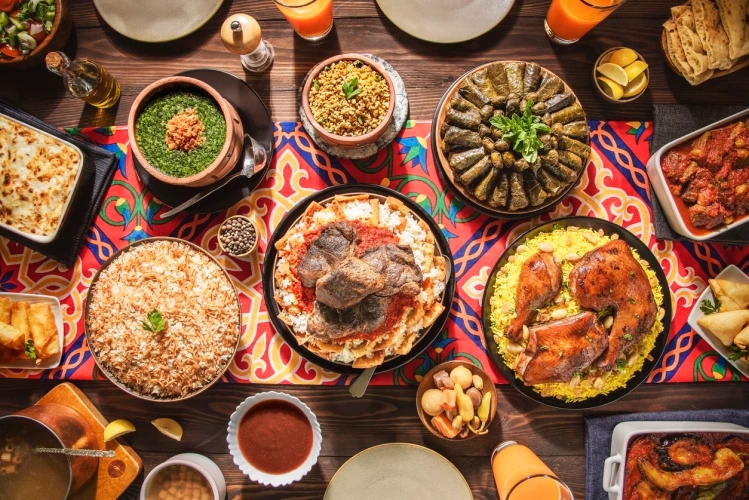

© Copyright 2025 Get Egypt Tour. All rights reserved.